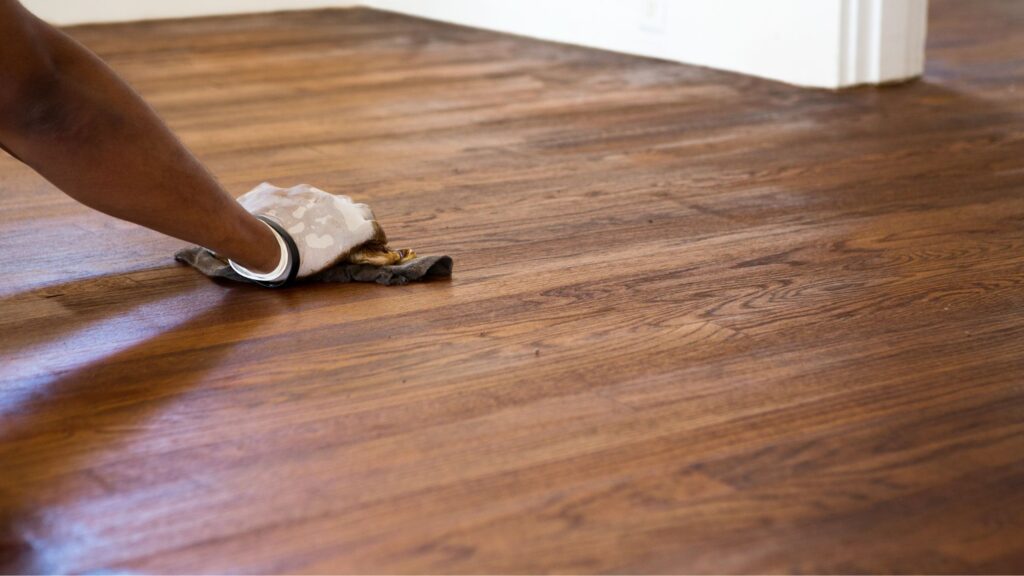Table of Contents
Hardwood floors are a timeless addition to any home, offering both beauty and durability. However, accidents happen, and stains on hardwood floors can become an unwelcome distraction from their natural elegance. Whether it’s a water ring from a forgotten glass or an overlooked spill, understanding how to tackle these blemishes is key to preserving your floors. This guide provides essential tips and techniques for effectively removing stains on hardwood floors, ensuring they continue to enhance your home’s aesthetic.
Identifying Stains on Hardwood Floors
The first step in addressing stains on hardwood floors is to identify the type of stain you’re dealing with, as this will dictate the appropriate removal strategy:
- Surface-Level Water Stains: Manifested as white rings or marks, these stains on hardwood floors are generally easier to remove and indicate that the moisture hasn’t penetrated deeply.
- Deep Water Stains: Dark brown or black spots suggest that moisture has seeped through the finish and into the wood, requiring more intensive removal methods.
The removal process will also vary depending on whether your floor has a surface finish, like urethane, or a penetrating finish such as wax.

Tools and Materials for Removing Stains on Hardwood Floors
To effectively remove stains on hardwood floors, you’ll need the following:
- For white rings and watermarks: 000 steel wool, wax, fine sandpaper, mineral spirits, wood floor cleaner, cloth for buffing, and urethane finished floor cleaner.
- For dark water stains: A small brush (like a toothbrush) and bleach.
- For other stains: Kitchen soap with lye, hydrogen peroxide, ammonia, cotton balls or rags.
Step-by-Step Guide to Removing Stains on Hardwood Floors
Addressing White Rings and Watermarks
- Allow Time for Drying: Let the stain dry for two days to see if it diminishes naturally.
- Clean Waxed Floors: For floors with wax or penetrating stains, gently rub the stained area with #000 steel wool and wax.
- Light Sanding for Persistent Stains: If necessary, lightly sand the area, clean with #00 steel wool and a wood floor cleaner, and let it dry. Then, re-stain, wax, and buff by hand.
- Urethane-Finished Floors: Utilize a cleaner designed for urethane finishes and scrub stubborn spots with a scrub pad meant for urethane floors.
- Stubborn Stains: For particularly resistant stains on hardwood floors, cover with a dry cotton cloth and apply a hot iron (not on steam) for a few seconds, or dampen a cloth with denatured alcohol and iron over the stain briefly.
Removing Dark Water Stains
- Bleach Application: Gently apply bleach with a toothbrush to the stain, repeat after several hours, and allow resting overnight.
- Stripping and Resealing: For stains that have deeply penetrated, stripping, sanding, and resealing may be the best course of action.
Addressing Other Types of Stains
- Non-Greasy Stains: Rub the area with kitchen soap containing a high lye content or apply hydrogen peroxide using soaked cotton.
- Greasy Stains: Follow the same steps as for non-greasy stains, adding ammonia for additional cleaning power. Let the area dry, then buff by hand.
When to Consult a Professional
While many stains on hardwood floors can be removed with DIY methods, some situations may require the expertise of a flooring professional. This is especially true for extensive stains or if you’re unsure about your floor’s finish. Professionals can provide customized solutions that avoid further damage to your valuable hardwood floors.
Conclusion
Stains on hardwood floors don’t have to spell disaster for your home’s appearance. With the right approach and a bit of elbow grease, you can remove most stains and restore your floors to their original luster. By acting promptly and using the appropriate techniques, you can ensure your hardwood floors remain a beautiful and durable part of your home.




